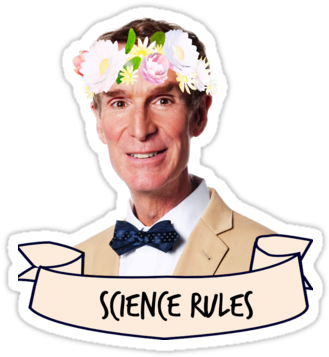1510
well?
(mander.xyz)
A place for majestic STEMLORD peacocking, as well as memes about the realities of working in a lab.

Rules
This is a science community. We use the Dawkins definition of meme.
This is a postulation not a discovery.
Someone did a weird math thingy that gave a word result and this was how they tried to explain it. There's been zero confirmation this is actually the case. Just like they can't decide if dark energy/matter is a thing.
We have a theory for expansion of the universe. It is called "the big bang theory".
However according to the math our universe should slow down expanding, but we can observe it is speeding up. Solution? Dark Energy.
There are models that try to simulate the orbits and shit of things we can see. Now those models aren't working however... Solution? Dark matter.
This is very run down concept of what dark matter and energy is. Basically shit we need for the math to work out to the observation we make.
However I don't think we are inside a black hole. This would mean that instead of mostly nothing our universe would be cramped with matter....
If you take all the mass in our universe and run it through the Schwarzschild equation, you get a black hole with about the same radius as our observable universe.
Things don't need to be tightly packed to be a black hole, there just needs to be enough stuff in an area.
How do we predict the total mass of the universe?
I think it's a combination of at least three things.
Cosmic Microwave Background radiation gives us a pretty good idea of the energy/mass density in the universe at a fixed point and age of the universe. If you take the densities estimated from the CMB and multiply it by the estimated size of the universe at the time the CMB (380k years after the Big Bang), then you get the total mass.
Second, we can just look for what we can see. I think there have been large-scale surveys done to estimate total mass/energy in the universe.
The third estimate has to do with something called 'critical mass' - we observe the overall 'curve' of space to be very close to flat. I'm talking the geometry of space; two parallel rays of light do not ever cross or diverge. For this to happen, there needs to be a certain average density of mass.
Wikipedia has the mass of the observable universe listed as 1.5×10^53 kg, although this can go up to 10^60 kg at the higher ends.
If we plug the Wikipedia numbers into the Schwartzchild radius formula: r = (2GM) / (c^2)
Where G is the gravitational constant, M is our mass, and c is the speed of light:
r = (2 * 6.67408 * 10^-11 m^3 kg^-1 s^-2 * 1.5*10^53 kg) / (299792458 m/s)^2
r = 2 * 10^43 m^3 s^-2 / 8.988 * 10^16 m^2/s^2
r = 2.225×10^26 meters
r = 23.52 billion light years
Wikipedia lists the radius of the observable universe as 46.5 billion light years.
So... given the Wikipedia numbers, the universe would need to be half the size it is now to be a black hole. At these scales, being within an order of magnitude is... fine.
If we bump up the estimate of mass to only 3x10^53 kg, then the Schwartzchild radius equals the size of the observable universe.
So it's within the margins of error of our current estimates that the Schwartzchild radius of our universe would be the current size of our universe.
Approximately
Light from stars tells us how big they are then adjust for things that don't emit light by looking at how objects move (i.e. gravity). Objects in this case not necessarily being single entities but often groups of things like entire galaxies. This is basically how dark matter became a thing. Scientists were like "hey theres waaaay more gravity moving things around but we dont see any objects causing it...."